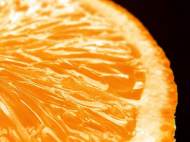Orange flour for gluten free bread
 Celiac disease occurs due to intolerance to gluten protein and it affects between 1 in 1,750 and 1 in 105 people depending on the part of the world. The only treatment for celiac disease at the moment is lifelong avoidance of foods containing wheat, barley, spelt, rye and some oats. Many gluten-free products available on the market are calorie dense, lacking in flavor and nutrients, and are costly to buy.
Celiac disease occurs due to intolerance to gluten protein and it affects between 1 in 1,750 and 1 in 105 people depending on the part of the world. The only treatment for celiac disease at the moment is lifelong avoidance of foods containing wheat, barley, spelt, rye and some oats. Many gluten-free products available on the market are calorie dense, lacking in flavor and nutrients, and are costly to buy.
Researchers at Teagasc Food Research Centre and University College Cork have been looking for alternatives and came up with idea to use the ‘waste’ from fruit processing in order to create flour. During the processing of fruit and vegetables, one third containing core, pips and peel is discarded as ‘waste’. Aside using it as supplements and fertilizers, some of this waste can be hazardous for the environment and it has to be disposed at high costs.
Research has shown that a high quantity of nutrients such as dietary fiber and bio-actives are present in these by-products, thus the full potential of the fruit or vegetable is not fulfilled. For example, orange pomace, a by-product from the smoothie and juice industry, has proven to have good nutritional attributes.
Orange pomace has only two percent of dry matter in fat and 40 percent of dry matter in dietary fiber, making it useful as a food ingredient. The researchers used it to create orange flour, and tested its use to create gluten-free bread formulations.
“Developing gluten-free formulations can be challenging for the cereal technologist, as the structure-building protein (i.e., gluten) is absent. In the present study, a response surface design was created to statistically calculate the optimal level of orange pomace addition, water addition and ideal proofing time to produce an optimal bread formulation”, said Dr Eimear Gallagher, Teagasc Food Research Centre. “This study investigated the effects of these three factors in different combinations on bread parameters such as loaf volume, crumb structure, crumb color, texture, microstructure, nutritional and sensory properties and the optimized samples were assessed using sensory panelists.”
Using response surface methodology as a tool, the researchers successfully created bread with favorable baking characteristics and enhanced dietary fiber. Orange pomace proved to be a viable, low cost food by-product for improving the physical and nutritional characteristics of gluten-free breads. According to researchers, sensory panelists scored the bread favorably with respect to appearance, flavor, texture and overall acceptability.
“The addition of this ingredient is not limited to gluten-free bread; it has potential to be used in both gluten-containing and gluten-free breads and confectionary”, said Dr Gallagher.
For more information, read the article published in Innovative Food Science & Emerging Technologies: “Dietary fibre and phytochemical characteristics of fruit and vegetable by-products and their recent applications as novel ingredients in food products”.










Leave your response!